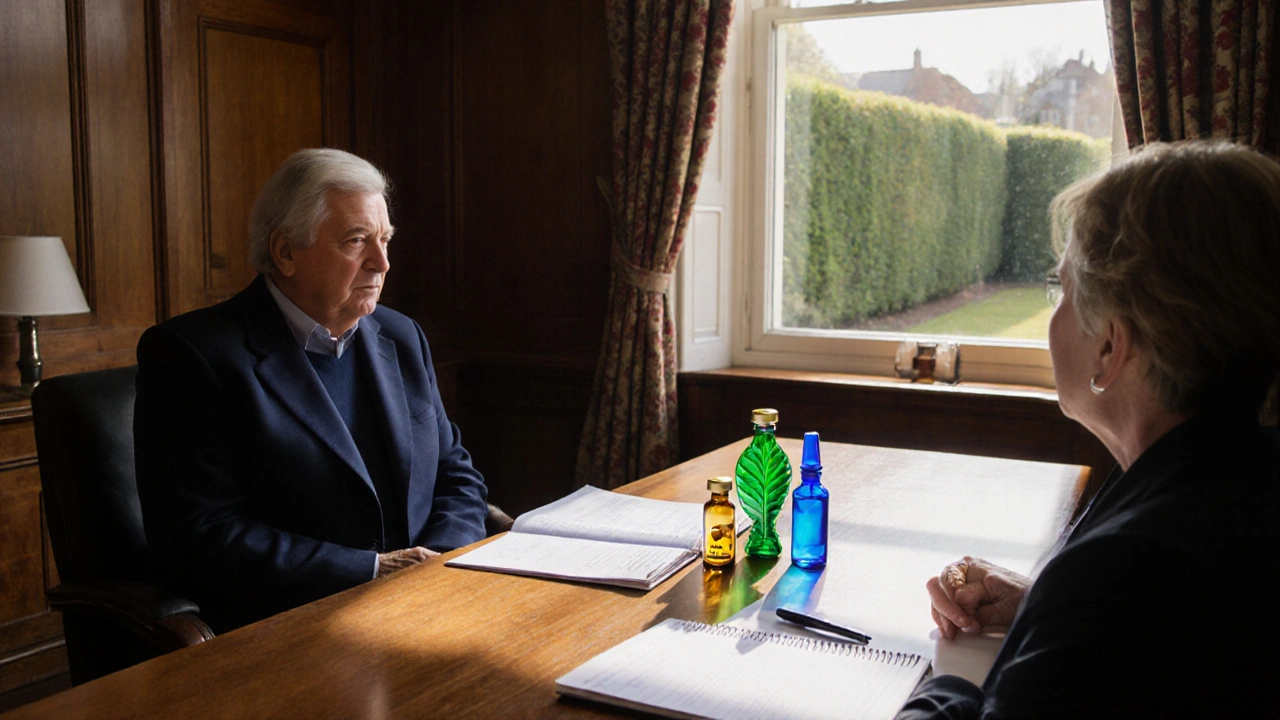Bile Acid Therapy: A Practical Guide
If you’ve ever heard doctors talk about “bile acid therapy” and wondered what it actually means, you’re not alone. In plain words, it’s a treatment that adds extra bile acids to your body to help digestion, support your liver, and keep the gallbladder happy. Think of bile acids as natural detergents that break down the fats you eat so your body can absorb them. When your body can’t make enough on its own, a supplement or prescription can fill the gap.
How Bile Acids Help Your Body
Bile acids do three main jobs. First, they emulsify fats – that means they turn big fat droplets into tiny ones, making it easier for enzymes to work. Second, they stimulate the release of hormones that tell the liver to produce more bile. Third, they help the gut absorb fat‑soluble vitamins like A, D, E, and K. Without enough bile, you might feel bloated after meals, have oily stools, or even develop gallstones.
People with conditions such as chronic liver disease, gallbladder removal, or certain intestinal disorders often have low bile acid levels. In those cases, adding a bile acid supplement can restore normal digestion and prevent nutrient deficiencies. The most common bile acids used in therapy are ursodeoxycholic acid (UDCA) and chenodeoxycholic acid (CDCA). They are generally well‑tolerated, but it’s still wise to talk to a pharmacist or doctor before starting.
When to Consider Bile Acid Therapy
You might think about bile acid therapy if you have any of these signs:
- Frequent greasy or foul‑smelling stools after meals.
- Unexplained weight loss despite eating enough.
- Persistent abdominal bloating or discomfort.
- Diagnosed gallstones or a removed gallbladder.
- Doctor‑confirmed liver or intestinal disease that affects bile production.
If any of those ring true, schedule a quick chat with your healthcare provider. They’ll likely run a blood test to check liver enzymes and may order imaging to see how your gallbladder is doing. Based on the results, they’ll decide whether a prescription of UDCA or an over‑the‑counter bile acid supplement is right for you.
When you start therapy, follow these practical tips:
- Take it with food. Bile acids work best when they’re mixed with the meal you’re trying to digest.
- Start low, go slow. Many clinicians recommend a low dose and then increase gradually to avoid mild diarrhea.
- Stay hydrated. Extra bile can pull water into the gut, so drinking enough fluids helps keep stools regular.
- Watch for side effects. If you notice severe stomach pain, yellowing of the skin, or unusual itching, call your doctor right away.
- Combine with a balanced diet. Low‑fat, high‑fiber meals support the therapy and make digestion smoother.
Most people feel a noticeable improvement within a few weeks. Fatty foods become easier to handle, and you may see less bloating and better energy levels. Remember, bile acid therapy isn’t a cure‑all; it works best as part of a broader plan that includes diet, exercise, and regular medical check‑ups.
In short, bile acid therapy can be a simple, safe way to fix a hidden digestion problem. By adding the right amount of natural detergents, you give your body the tools it needs to break down fats, absorb vitamins, and keep the liver and gallbladder in good shape. If you suspect low bile is the culprit behind your digestive woes, talk to a professional and see if this therapy fits your health goals.
Actigall (Ursodiol) vs. Alternatives: A Practical Comparison
A detailed side‑by‑side comparison of Actigall (Ursodiol) with chenodiol, obeticholic acid, surgery and watchful waiting, covering effectiveness, side effects, costs and how to pick the right option.
